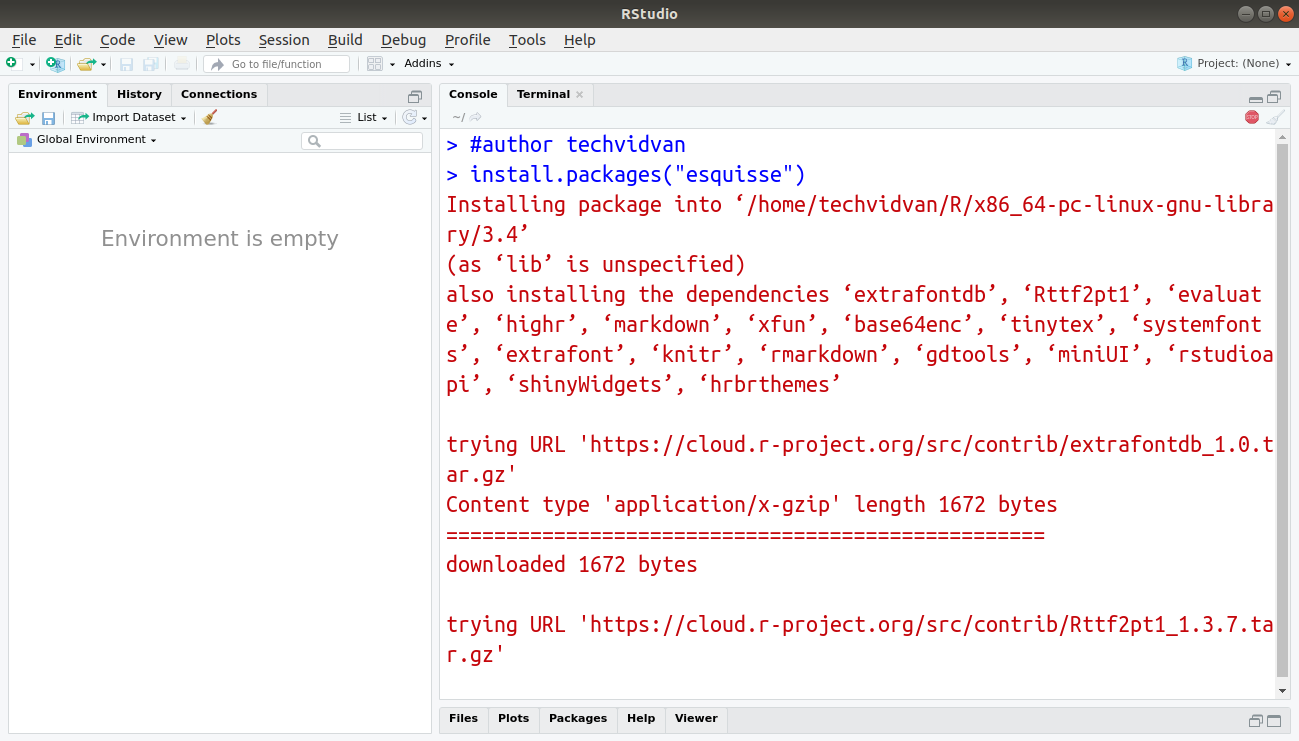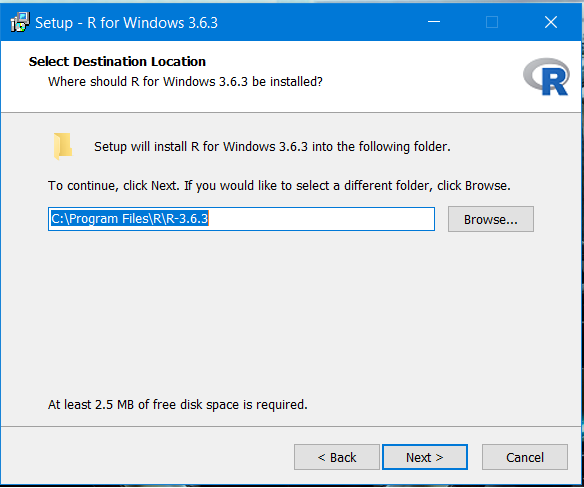
- #R studio install package how to#
- #R studio install package install#
- #R studio install package 32 bit#
- #R studio install package full#
install. You will also need to pay attention to make sure you're not using different styled quotation marks that are sometimes created in text editors if you’re using a foreign language.
#R studio install package install#
Install.packages("boot", repos = NULL, type = "source")īut I would prefer to do this with a single call to install.packages only and since install.packages is capable of downloading files anyway I feel this should be possible. Download and install packages from CRAN-like repositories or from. Here is a sweet suite of data science packages.

This function computes the exponential of a square matrix. Here you need to give the package name you need to install. We can work around this with the following two step procedure: download.file( After selecting the tools you need to press install packages. Note that, every time you install an R package, R may ask you to specify a CRAN mirror (or server). Suggesting that the URL is being interpreted as the package name, not its location. It prompted me to install another package, 'devtools'. Link1, link2 (I think this was what fixed the problem) Follow instructions on this link.
#R studio install package full#
However this fails with: Warning in install.packages : Open R/RStudio as administrator Change the R library folder (where packages are installed) security settings, and grant full access to my computer user account. Linux users may need to import Posit's public code-signing key prior to installation, depending on the operating system's security policy.
#R studio install package 32 bit#
Reading ?install.packages particularly the description of the pkgs argument suggests: install.packages( If you are on a 32 bit system, you can use an older version of RStudio.
#R studio install package how to#
This is a similar question but it is different because it only describes how to install from local files not general URLs.įor the sake of this question I will use a link to the boot package source. I want to do this to make it easy for people to test a pre-release version of the package which should not be widely (or permanently) available. You’ll need to adjust the path to reflect the location where the Excel file is stored on your computer (don’t forget to use double backslash within the path name to avoid any errors).I would like to install a package directly from a URL for the package source. Read_excel("C:\\Users\\Ron\\Desktop\\Products.xlsx") That will run some code in your R Console and will take a few seconds to install. So this is the code to import the Excel file: library("readxl") In the Source Editor pane, type install.packages('readxl') and click Run to download the readxl library. The data that is stored in the Excel file is as follows: productįor demonstration purposes, assume that the file is stored under the following path: Let’s say that you want to import an Excel file into R (where the Excel file name is ‘Products’). To start using the package installed, you’ll need to load it in the R Editor.įor instance, to load the readxl package, you’ll have to use: library("readxl")


Since I am only using a few packages in my R code, I was hoping to avoid using the install.packages function by downloading and installing the packages manually. Step 4: Start using the package installed I am currently trying to run some R code on a computing cluster but cannot run the install.packages function due to some weird firewall settings on my cluster. You may choose a mirror which is closer to your geographic location. Step 3: Select a Mirror for the installationįor the final step, select a Mirror for the installation.

Once you are done typing the command, press ENTER to proceed with the installation. Now you’ll need to use the following template to install your package: install.packages("package_name")įor example, you may type the following command in the R Console in order to install the readxl package: install.packages("readxl") Step 2: Type the command to install the package


 0 kommentar(er)
0 kommentar(er)
